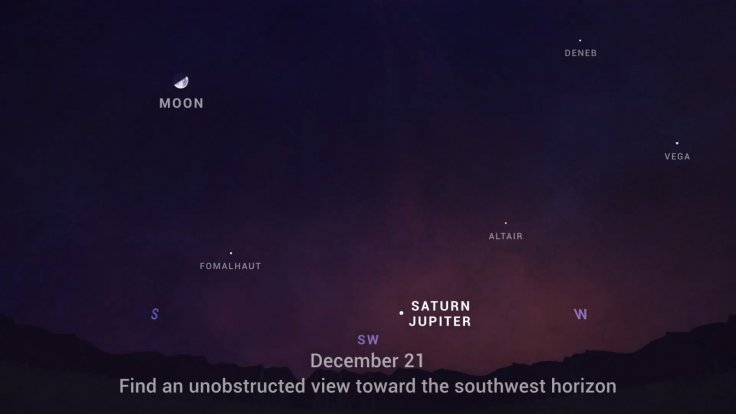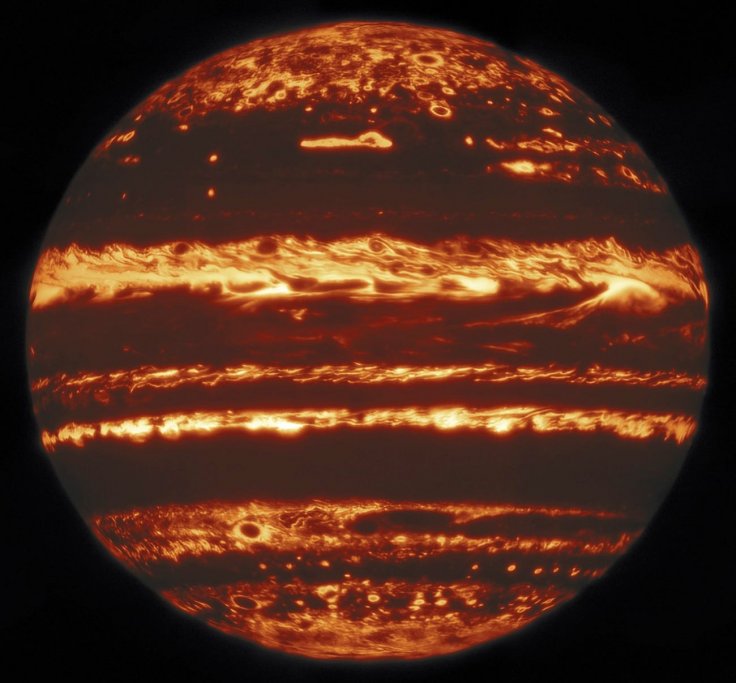December is turning out to be a great month for stargazers. In one of the rarest events in centuries, the two biggest planets of the solar system, Jupiter and Saturn, will form the 'The Great Conjunction' tonight (December 21), the first time in 400 years. Those who are interested in watching celestial events can witness this rare event of Jupiter and Saturn almost overlapping each other in the evening in the western sky.
As the Great Conjunction beings, the planets will be just 0.1 degrees apart or about one-fifth the apparent width of the moon. Interestingly, this event won't happen again in the next 60 years, that is, until 2080. Here's where, when and how you can watch the rare event.
When to Watch

Also known as the Christmas Star, the Great Conjunction last occurred in 1623. On this occasion Jupiter and Saturn are in conjunction when they have the same right ascension or celestial longitude. According to Space.com, this is what is referred to as a 'Great Conjunction', signifying the rarity of the union because unlike conjunctions with the other bright planets, these two don't get close as often.
The event can be viewed just after sunset in the southwestern sky. The best time is an hour after sunset when the sky is dark. Although the conjunction process started a few days back, one will get the best view today, when Jupiter will overtake Saturn and they will reverse positions in the sky. In fact, astrophysicists say that December 21 is the safest day to view as it will remain clear for the maximum time on this day.
Where and How to Watch

Despite appearing extremely close, Jupiter and Saturn will actually be more than 450 million miles apart. Earth, meanwhile, will be 550 million miles from Jupiter. The event can be viewed from almost anywhere in the northern hemisphere. However, the equator is the best place. The ideal way to view the conjunction is from a terrace in naked eye as both Jupiter and Saturn are bright planets.
As Jupiter is 10 times brighter than Saturn these days and difficult to resolve the two separately on 21, it could be a challenge getting a clear view with naked eye. So binoculars are suggested. A telescope will not only capture Jupiter and Saturn in the same field of view as they will look far apart then.

NASA suggests that one should find a spot with unobstructed view of the sky. The place should be preferably dark such as an open field or park at night. Jupiter will look like a bright star and be easily visible. Saturn will be slightly fainter and will appear slightly above and to the left of Jupiter. However, tonight, Jupiter will overtake Saturn and reverse position making it the Great Conjunction. One can also take photographs of the conjunction.
NASA also suggests using a low power telescope to see Jupiter's four moons orbiting the planet. Websites like Stellarium can help in aligning telescopes.
Those who can't head outside for the event, the Lowell Observatory in Flagstaff, Arizona, will host a YouTube livestream of views through its telescopes starting at 7 p.m. ET on December 21. In Rome, the Virtual Telescope Project also plans to share live views of the conjunction.









